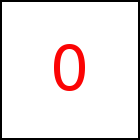Position Specification
Various taccgl™-Methods (e.g. position, from,
to, clip) receive coordinates in 2D or in 3D space.
3D coordinates usually refer to the 3D model while 2D coordinates are
often used for textures (e.g. map) or refer to pixel
coordinates of the underlying HTML page. Coordinates can be given
either directly using 2 or 3 numerical parameters
as described with the individual methods or using a
position specification. A position specification is a
javaScript object usually written using curley brackets
as {positioning options}.
If a position specification is passed to a taccgl™
method, it is evaluated when starting the method. Evaluation leads
to the actual coordinates, which are then used just as numerical
parameters would.
Examples for simple position specifications are {x:50,y:100,z:0}
which gives all coordinates explicitly and {oy:100} which specifies an offset
of 100 pixels in y direction.
Position calculation is based on a transition t, which
displays or animates e.g. an HTML element or a 3D object.
Per default the transition object is used, whose method was called.
So for example relative coordinates such as ox,oy,oz or
rx,ry,rz use the position of the base transition t
as starting point.
If the base transtion t describes a motion i.e. if the position
moves over time, using pt the desired point in time can be
specified. pt=0 stands for the begin of the transition and
pt=1. pt=0 is the default, i.e. per default
the base for relative coordinates is the from value.
| option | Meaning |
|---|
| x:number, y:number, z:number
| Specifies absolute coordinate values directly in pixels. |
| ox:number, oy:number, oz:number
| Specifies coordinate offsets that are added to the coordinates
at the end in pixels. |
| rx:number, ry:number, rz:number
| Specifies relative coordinates within the coordinate system
of the current transition. This is similar to ox,oz,oy but the values
are not given in pixels. Instead a value of rx=1 means
the width of the current transition. So {rx:1,ry:0,rz:0} refers to the top right
corner; {rx:0,ry:1,rz:0} to the bottom left corner, {rx:0.5,ry:0.5,rz:0.5}
to the point in the center.
|
| el:id, ex:number, ey:number
| id must be the id of an HTML element (or a DOM node).
The coordinates ex, eyspecify relative coordinates
within the coordinate system
of the specified HTML element. So {ex:1,ey:0} refers to the top right
corner; {ex:0,ey:1} to the bottom left corner, {ex:0.5,ey:0.5}
to the point in the center.
|
| t:transition | Makes
position calculation based on the specified transition. |
| pt:number | Usually the base point
for relative coordinates is the from value of the base transition
t. For pt:1 calculation is based on the to value.
In general it is based
on from*(1-pt) + to*pt . |
| rt:number |
For some specifications, e.g. rx, ry, rz the size of the transition
is relevant. If this is a resizing transition, i.e. the height, width, or,
depth changes over time, then rt can be used to select this point
in time. rt:1 means to take the destination
size as basis for the calculation. In general from_size*(1-rt) + to_size*pt
is used as size. |
| hx:number, hy:number, |
The coordinates hx and hy are relative to the home position of
the base transition. This is the position of the HTML element given
in the a or actor method, possibly modified by clipping.
hx:0, hy:0 refers to the top left corner of the HTML element,
hx:1, hy:1 to the bottom right corner.
|
| rel:id, rex:number, rey:number
| rel, rex, rey specify a position under the
same rules as el, ex, ey. This position is then added to the
position defined by other positioning options.
|
| mel:id, mex:number, mey:number
| mel, mex, mey specify a position under the
same rules as el, ex, ey. This position is then subtracted from the
position defined by other positioning options.
|
| Tx:number, Ty:number
| Tx, Ty specify coordinates relative
to the texture space assigne to the transition. If the transition
has a moving or resizing texture pt and rt are
honored accordingly.
|
| M:transition, mx:number, my:number,
mz:number, Mx:number, My:number,
Mz:number
| M must be a transition displaying an external
3D object. Then mx, my, mz define a point in coordinates
of the external 3D model. Alternatively Mx, My, Mz
can be given. These coordinates are scaled according to the actual size
of the 3D model.
|
Notes
- Normally just one of
- x, y, z,
- e, ex, ey,
- hx, hy,
- Tx, Ty, or
- M, mx, my, mz, Mx, My, Mz
should be
given. These define a base point. Other positioning options
- ox, oy, oz
- rx, ry, rz
- rel, rex, rey
- mel, mex, mey
then result in values that a added to (or subtracted from) this base
point.
- As an exception to the above rule, it is possible to combine one
or two of the x, y, z - options with other options.
Then the one or two specified values are taken while the remain
coordintates are calculated according to the above rules.
|





